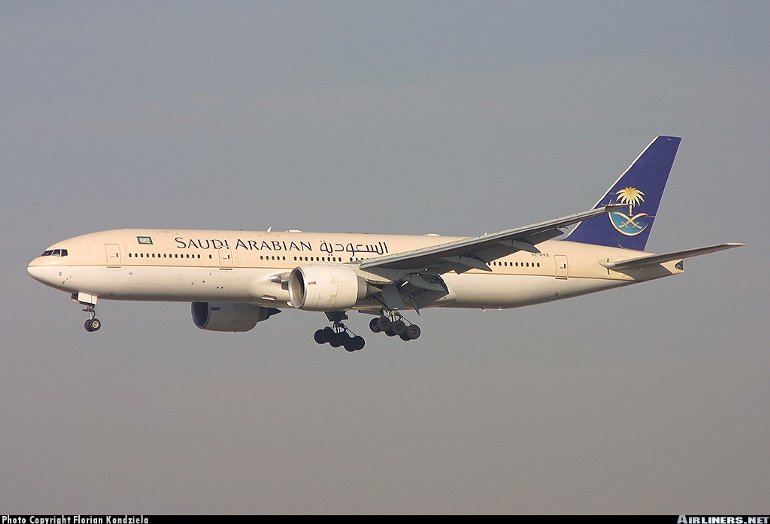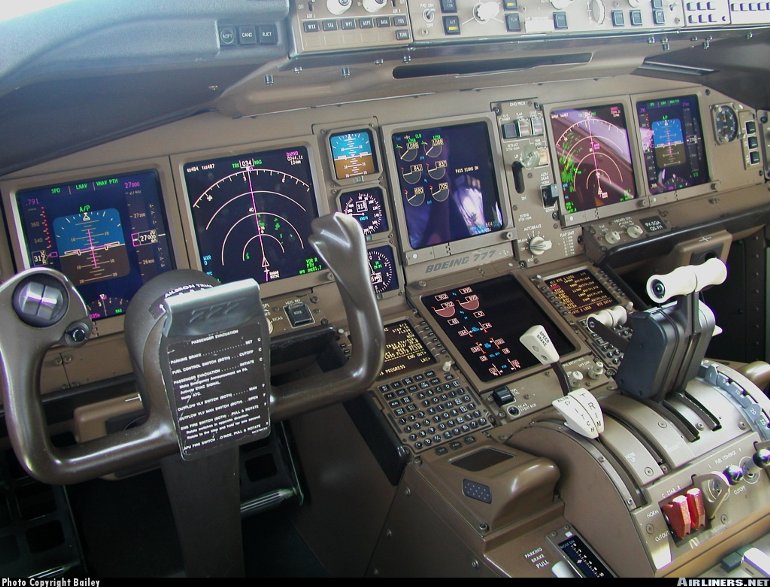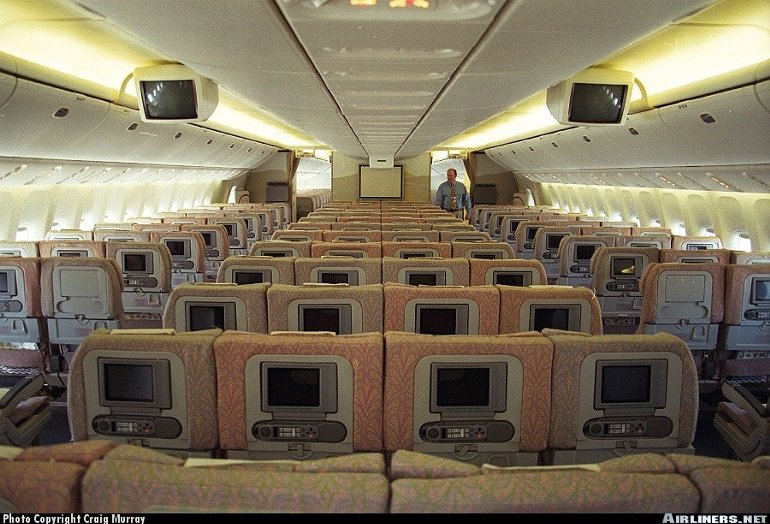Aircraft Technical Data
Boeing 777-200



| Details | |
| Country of Origin | United States of America |
| Type | Long and ultra long range widebody airliners |
| History | Boeing's advanced widebody 777 twin incorporates more advanced technologies than any other previous Boeing airliner, and has been progressively developed into increasingly longer range developments. The 777 was originally conceived as a stretched 767, but Boeing instead adopted an all new design. Notable 777 design features include a unique fuselage cross section, Boeing's first application of fly-by-wire, an advanced technology glass flightdeck with five liquid crystal displays, comparatively large scale use of composites (10% by weight), and advanced and extremely powerful engines. The 777 was also offered with optional folding wings where the outer 6m/21ft of each would fold upwards for operations at space restricted airports. The basic 777-200 as launched in October 1990 was offered in two versions, the basic 777-200 (initially A-Market) and the increased weight longer range 777-200IGW (Increased Gross Weight, initially B-Market). The IGW has since been redesignated 777-200ER. The 777-200 first flew on June 12 1994, with FAA and JAA certification awarded on April 19 1995. The FAA awarded full 180 minutes ETOPS clearance for PW4074 -200s on May 30 that year. First customer delivery was to United Airlines in May 1995. The first 777-200IGW/ER was delivered to British Airways in February 1997. The 777-100X was a proposed shortened ultra long range (16,000km/8635nm) model, dropped in favour of the 777-200LR (originally 777-200X) design study. Boeing claims the 777-200LR will be the longest ranging airliner, capable of flying 16,417km (8865nm) - 18 hours flying time. It will achieve this with awesomely powerful 489kN (110,000lb) thrust GE90-110B1 turbofans, a significantly increased max takeoff weight and optional auxiliary fuel tanks in the rear cargo hold. Other changes include 2m (6.5ft) raked wingtips, new main landing gear, structural strengthening and optional overhead crew and flight attendant rest stations above the cabin. The 777-200LR was launched in 2000, but is now delayed until 2006. The stretched 777-300 is described separately. |
| Powerplants | 777-200 - Two 329kN (74,000lb) Pratt & Whitney PW4074 turbofans, or 334kN (75,000lb) General Electric GE90-75Bs, or 334kN (75,000lb) Rolls-Royce Trent 875s. 247 tonne MTOW version - Two 345kN (77,000lb) PW4077s, or 338kN (76,000lb) GE90-76Bs or 345kN (77,000lb) Trent 877s. 777-200ER - Two 374kN (84,000lb) PW4084s, or 378kN (85,000lb) GE90-85Bs, or 373kN (84,000lb) Trent 884s; or 400kN (90,000lb) class PW4090s, GE90-90B1s, or Trent 890s; or 409kN (92,000lb) GE90-92Bs. 777-200LR - Two 489kN (110,000lb) GE90-110B1s. |
| Performance | Typical cruising speed 905km/h (490kt). 777-200 - Range 229 tonne MTOW 7000km (3780nm), 233 tonne MTOW 7778km (4200nm), 247 tonne MTOW range 9537km (5150nm). 777-200ER - 263 tonne MTOW range 11,037km (5960nm), 286 tonne MTOW range 14,316km (7730nm). 777-200LR - Max range 16,417km (8865nm) |
| Weights | 777-200 - Empty 139,025kg (306,500lb) or 139,160kg (306,800lb), max takeoff optionally 229,520kg (506,000lb), or 233,600kg (515,000lb), or 247,210kg (535,000lb). 777-200ER - Empty 142,430kg (314,000lb) with 374kN/84,000lb engines, 143,015kg (315,300lb) with 400kN/90,000lb engines, max takeoff optionally 263,085kg (580,000lb) or 286,897kg (632,500lb). 777-200LR - Max takeoff 341,105kg (752,000lb). |
| Dimensions | 777-200 - Wing span 60.93m (199ft 11in), or folded 47.32m (155ft 3in), length 63.73m (209ft 1in), height 18.51m (60ft 9in). Wing area 427.8m2 (4605sq ft). |
| Capacity | Flightcrew of two. Passenger seating for 305 in three classes or up to 440. Underfloor capacity for up to 32 LD3 containers. |
| Production | Total 777-200 orders received as of early 2003 452, with 379 delivered. |
| Related Links | Boeing 777-200 |
The backbone of this section is from the The International Directory of Civil Aircraft by Gerard Frawley and used with permission. To get your own copy of the book click here. |
|








